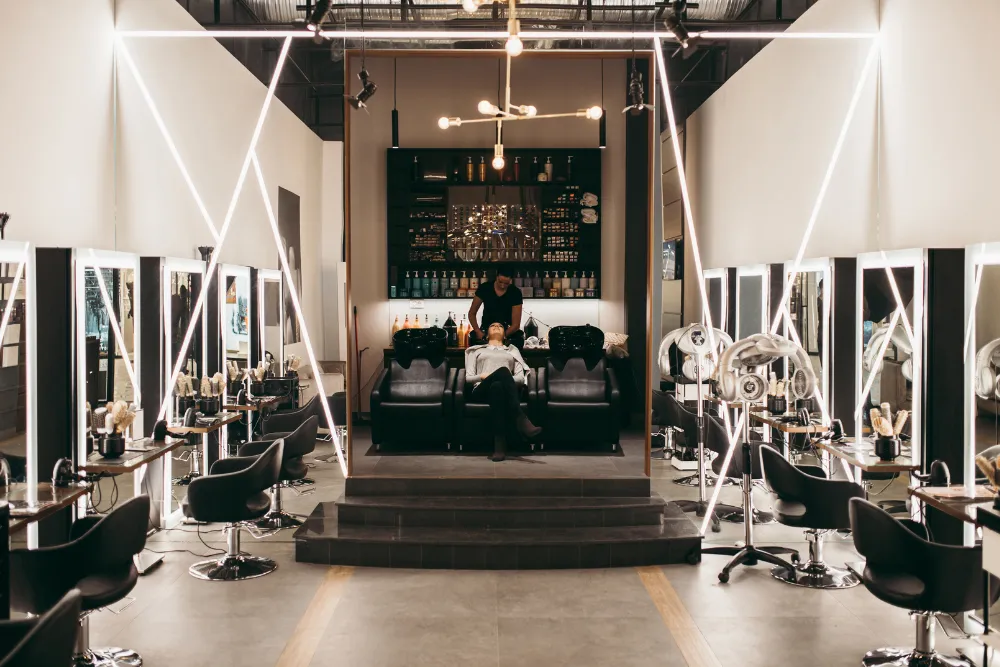Thinking about renting a chair in a salon? It’s an exciting step towards independence and building your personal brand. As a new salon owner, it’s essential to understand the ins and outs of the salon booth rental model. We’ll cover the average costs, revenue shares, what’s included in the rent package, pros and cons, and other key considerations. Ready to explore? Let’s get started!
The Cost of Renting a Booth
The average monthly cost to rent a booth in a salon is around $1,000, but this can vary based on location and size. While you might think paying less on rent means more money in your pocket, cheaper rent could be due to a bad location, low foot traffic, or the condition of the space. Here’s what to consider:
- Compare Prices: Once you decide on a location, check the surrounding areas to understand the going rate. This is basic homework you have to do.
- Additional Costs: Determine what extra services the salon provides. Some rentals might seem cheaper but don’t include essentials like utilities, equipment, or beverages. Ask all the questions on your checklist.
Revenue Share and Payment Frequency
It’s rare to have a revenue share model on booth renting; usually, you pay your rent and keep all the money you make. However, ask thoroughly just in case.
- Long-Term Discounts: Some salon owners may offer discounted rates for longer-term rentals. This can be a great way to save money, but it comes with a commitment. Make sure you will develop your business in that area for years, and the area has the target customer demographic you’re looking for. It’s important to research the local market to ensure there is a demand for your services and that the area attracts your ideal clientele. Additionally, consider the working environment. You’ll be spending a lot of time in the salon, so it’s crucial to ensure it’s a place where you feel comfortable and can thrive.
- Weekly vs. Monthly Payments: Decide if paying weekly or monthly suits your financial situation better. Some prefer weekly payments to match their earnings flow.
Utilities and Inclusions
When renting a booth, it’s important to know what’s included in your rent package:
- Utilities: Electricity and water are typically covered, but always double-check.
- Salon Access: Ensure you can use the salon during non-business hours if needed. You may need to stay longer to practice newly acquired skills or shoot some video content for your social media marketing.
- Referral Fees: Understand if there are fees for walk-in customers referred to you by the salon.
- Supplies and Equipment: Determine if you need to bring your own or if the salon provides them. Most salons require you to bring your own products.
Building Your Clientele
If you’re new to the industry, it might be better to work in a commission-based salon and build your client base before renting a booth. Owners usually prefer to rent to those with a solid following. Paying a few hundred dollars in rent a week is challenging if you only have a couple of clients.


Pros and Cons of Booth Renting
Advantages
- Be Your Own Boss: Set your own hours and prices, and create a unique salon culture.
- Increased Earnings: Keep all your earnings without sharing a cut with the salon.
- Flexibility: Enjoy a better work-life balance and privacy with clients.
- Tax Benefits: Renting a booth is considered running a small business. Register an entity and deduct all costs under the business for proper tax benefits.
- Learn Business Operations: Get a full picture of business operations, which will be great practice for growing your business out of that chair to become a salon owner one day.
Disadvantages
- Financial Risks: You’re responsible for all expenses, including rent, insurance, and supplies.
- Increased Responsibilities: Manage inventory, schedule appointments, and handle client transactions. You definitely have more hats to wear, but it’s not always a bad thing.
- Lack of Support: You might miss out on the support provided by salon management in a commission-based setup. You will not have access to overflow customers in big salons and will need to market your own business and acquire customers. You will also have to source the right products and equipment on your own.
Understanding Booth Rental Agreements
Your rental agreement will outline the terms, including the cost, duration, and any additional responsibilities. Here’s what to look for:
- Flat Rate or Percentage: Rent could be a flat monthly fee or a portion of your revenue.
- Length of Agreement: Longer contracts might offer lower monthly rates.
- What’s in the Package: Read thoroughly on the items and services you will have access to once you sign the rental. List in detail in the agreement to avoid unnecessary disputes in the future.
- Location and Reputation: High-traffic areas and reputable salons typically cost more.
Is Booth Renting Right for You?
Ask yourself these questions:
- Do you want to create a salon that reflects your personal style?
- Do you have an existing client base?
- Do you want flexibility in your working hours?
- Are you ready to run your own business?
If you answered yes, salon booth rental might be the perfect fit for you! Choosing between salon booth rental and a commission-based model depends on your career goals, financial stability, and risk tolerance. Booth rental offers independence and the potential for higher earnings, while commission provides stability and less responsibility.
By understanding the costs, responsibilities, and benefits of booth renting, you can make an informed decision that best suits your professional and personal goals. Ready to take the leap? Before making a decision, click HERE to review our analysis on potential revenue forecasts and salon service pricing.
